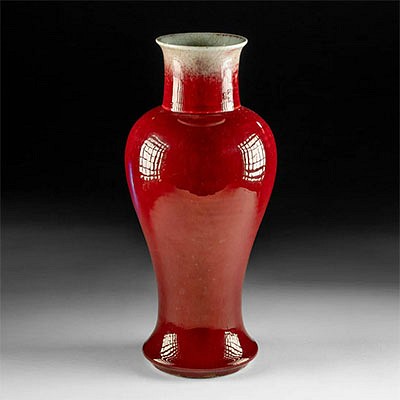Superb Aztec Stone Coiled Serpent / Quetzalcoatl
Lot 281
About Seller
Artemis Fine Arts
686 S Taylor Ave, Ste 106
Louisville, CO 80027
United States
Selling antiquities, ancient and ethnographic art online since 1993, Artemis Gallery specializes in Classical Antiquities (Egyptian, Greek, Roman, Near Eastern), Asian, Pre-Columbian, African / Tribal / Oceanographic art. Our extensive inventory includes pottery, stone, metal, wood, glass and textil...Read more
Estimate:
$14,000 - $21,000
Absentee vs Live bid
Two ways to bid:
- Leave a max absentee bid and the platform will bid on your behalf up to your maximum bid during the live auction.
- Bid live during the auction and your bids will be submitted real-time to the auctioneer.
Bid Increments
| Price | Bid Increment |
|---|---|
| $0 | $25 |
| $300 | $50 |
| $1,000 | $100 |
| $2,000 | $250 |
| $5,000 | $500 |
| $10,000 | $1,000 |
| $20,000 | $2,500 |
| $50,000 | $5,000 |
| $100,000 | $10,000 |
| $200,000 | $20,000 |
About Auction
By Artemis Fine Arts
May 11, 2023
Set Reminder
2023-05-11 10:00:00
2023-05-11 10:00:00
America/New_York
Bidsquare
Bidsquare : Fine Antiquities, Asian, Pre-Columbian, Ethnographic Art
https://www.bidsquare.com/auctions/artemis-gallery/fine-antiquities-asian-pre-columbian-ethnographic-art-12771
Classical antiquities, ancient and ethnographic art from cultures encompassing the globe. Artemis Fine Arts info@artemisgallery.com
Classical antiquities, ancient and ethnographic art from cultures encompassing the globe. Artemis Fine Arts info@artemisgallery.com
- Lot Description
**Originally Listed At $7500**
Pre-Columbian, Central Mexico, Aztec, ca. 1325 to 1475 CE. An incredible stone carving of a serpent with the coils interlacing, forming a large and solid ball, the head and forked tongue resting atop the body. To the side of the head is a rattle, and the slightly parted mouth bears enormous fangs. Remains of original red pigment to one side of the snake. The South American rattlesnake was associated with the deity Quetzalcoatl, the mythical feathered serpent. The body itself is smoothly carved, a twisting and mesmerizing knot. Snakes provide a fascinating element of Pre-Columbian iconography, as important symbols of power, rebirth, transition, and renewal. Since snakes shed their skin annually, thus rejuvenating themselves, the ancients of Mexico viewed them as providing hope for the possibility of change in the face of adversity. Size: 12" L x 9" W x 12" H (30.5 cm x 22.9 cm x 30.5 cm)
Quetzalcoatl translates to "Feathered Serpent" in the Nahuatl language - the Pre-Columbian deity revered as lord of wind and sky, and the word quetzal is used today as the name of several species of trogon birds. The earliest representations of Quetzalcoatl adorn the Temple of Quetzalcoatl in Teotihuacan, Mexico (ca. 3rd century CE) where numerous stone heads of the divine plumed snake embellish the steps of this Pre-Classic pyramid. The pioneering artist/anthropologist Miguel Covarrubias whose writings and illustrations on indigenous cultures of the ancient Americas continue to contribute to scholarly studies today stated, "Quetzalcoatl stood for all that was good in this world: peace, art, wisdom, and prosperity. Disguised as an ant, he discovered maize, the staple food of the Indians, hidden under the mountain of Substance, Tonacatepetl; he also invented the arts, the sciences, and the calendar. In fact, everything connected with wisdom and culture was attributed to Quetzalcoatl." (Miguel Covarrubias, Mexico South: The Isthmus of Tehuantepec (New York: Alfred A. Knopf, 1946), 130)
Provenance: ex-Marc Amiguet Schmitt estate, Amiguet's Ancient Art, Evansville, Indiana, USA, acquired prior to January 1, 2010
All items legal to buy/sell under U.S. Statute covering cultural patrimony Code 2600, CHAPTER 14, and are guaranteed to be as described or your money back.
A Certificate of Authenticity will accompany all winning bids.
We ship worldwide and handle all shipping in-house for your convenience.
#173322Stable fissures as shown on head and body. Weathering and abrasions commensurate with age and exposure to elements. Details are still sharp and clear.Condition
- Shipping Info
-
All shipping is handled in-house for your convenience. Your invoice from Artemis Gallery will include shipping calculation instructions. If in doubt, please inquire BEFORE bidding for estimated shipping costs for individual items. In most cases Artemis Gallery cannot ship to Australia and Germany, please inquire before bidding.
-
- Buyer's Premium



 EUR
EUR CAD
CAD AUD
AUD GBP
GBP MXN
MXN HKD
HKD CNY
CNY MYR
MYR SEK
SEK SGD
SGD CHF
CHF THB
THB














